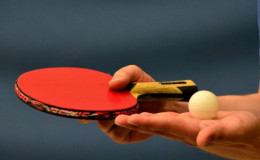
Chess is a two player game played on a square chess board of 8 rows and 8 columns.
- The colours of the sixty-four square changes alternatively and are referred to as "light squares" and "dark squares"
- The pieces by convention are divided into white and black.
- The player with white colour always starts a game.
- The object of the game is to checkmate opponent’s king.
- It is organized sports of international Olympic committee and is sanctioned by FIDE.
Chessboard:
It is square checkered board with 64 squares arranged in eight by eight grids.
Each player starts a game with 16 pieces.
There is one king, one queen, two rooks, two knights, two bishops and eight pawns
Movement of chess pieces and General Rules:
A player should not make any move that would put or leave his king under attack.
If the player to move has no legal moves, the game is over;
It is either a checkmate—if the king is under attack or
A stalemate—if the king is not.
Each of the 6 chess piece has its own style of moving:
The king
The king is the most important piece, but is one of the weakest. The king can only move one square in any direction - up, down, to the sides, and diagonally
The queen
The queen is the most powerful piece. If moved she can move in any one straight direction - forward, backward, sideways, or diagonally - as far as possible as long as she does not move through any of her own pieces. And, like with all pieces, if the queen captures an opponent''s piece her move is over.
The rook
The rook may move as far as it wants, but only forward, backward, and to the sides. The rooks are particularly powerful pieces when they are protecting each other and working together!
The bishops:
The bishop may move as far as it wants, but only diagonally. Each bishop starts on one colour (light or dark) and must always stay on that colour. Bishops work well together because they cover up each other’s weaknesses.
The knights:
Knights move in a very different way from the other pieces – going two squares in one direction, and then one more move at a 90 degree angle, just like the shape of an “L”. Knights are also the only pieces that can move over other pieces.
The Pawns:
The Pawns are unusual because they move and capture in different ways: they move forward, but capture diagonally.
The Pawns can only move forward one square at a time, except for their very first move where they can move forward two squares.
Pawns can only capture one square diagonally in front of them. They can never move or capture backwards. If there is another piece directly in front of a pawn he cannot move past or capture that piece.
Promotion:
Pawns have another special ability and that is that if a pawn reaches the other side of the board it can become any other chess piece (called promotion). A pawn may be promoted to any piece. A pawn is usually promoted to a queen. Only pawns may be promoted.
En passant:
If a pawn moves out two squares on its first move, and by doing so lands to the side of an opponent’s pawn (effectively jumping past the other pawn’s ability to capture it), that other pawn has the option of capturing the first pawn as it passes by. This special move must be done immediately after the first pawn has moved past, otherwise the option to capture it is no longer available.
Castling:
This move allows you to do two important things all in one move:
Get your king to safety and
Get your rook out of the corner and into the game.
The checkmate:
This happens when the king is put into check and cannot get out of check. There are only three ways a king can get out of check: move out of the way, block the check with another piece, or capture the piece threatening the king. If a king cannot escape checkmate then the game is over. Customarily the king is not captured or removed from the board, the game is simply declared over.
Apart from that some tournaments follow some other rule like
Touch move:
If a player touches one of their own pieces they must move that piece as long as it is a legal move.
If a player touches an opponent’s piece, they must capture that piece.
A player who wishes to touch a piece only to adjust it on the board must first announce the intention, usually by saying “adjust”.
Clock and timers:
Most tournaments use timers to regulate the time spent on each game, not on each move.
Each player gets the same amount of time to use for their entire game and can decide how to spend that time.
If a player runs out of time and the opponent calls the time, then the player who ran out of time loses the game.
Governing bodies:
FIDE (federation International des Echecs), is a member of international Olympic committee.
Most countries have national chess organisation and are members of FIDE
Tournaments:
- World chess championships (men and women)
- World junior chess championships
- European Individual chess championships.
- National chess championships
- The chess Olympiad held every two years featuring participants from different nations.
*Though FIDE is a member of international Olympic committee, chess has been never the part of Olympic Games.
Titles and Rankings:
- Grand master
- International master
- FIDE master
- Candidate master










